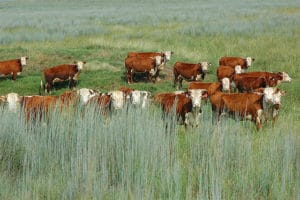Cornucopia’s Take: In an effort to prevent vulnerable grasslands from being developed or converted into cropland, the USDA’s Conservation Reserve Program (CRP) Grasslands Initiative has worked with farmers to enroll over 600,000 U.S. grazing acres. This program benefits diversity.
USDA GRASSLANDS INITIATIVE EXPANDING IN STATES WITH HIGHEST LOSSES
National Sustainable Agriculture Coalition
 |
At the end of just its second sign up period, the U.S. Department of Agriculture’s (USDA) Conservation Reserve Program (CRP) Grasslands Initiative has enrolled over 600,000 acres of vulnerable grazing land across the country. Strong support for the Grasslands Initiative so early on is a positive sign, but high variability in participation amongst the states with the highest grasslands losses indicates that more outreach may be needed.
Farmers and ranchers enrolled roughly 101,000 acres during the first sign up period and nearly 505,000 acres during the second sign up. The third sign up period is ongoing until December 16.
According to USDA’s Farm Services Agency (FSA), which administers the program, over 70 percent of the acres enrolled through the second sign up period were enrolled by beginning farmers, veterans, and underserved producers. While this number is significantly lower than the 97 percent of enrollments under the first ranking period, the result is impressive for the first years of a program, and we commend FSA for focusing on these underserved groups.
The majority of acres enrolled in the second sign up period came from states and counties where grasslands are at very high risk of being converted to cropland or for development purposes. By far, the greatest conversion in 2015 occurred in Texas, which ranked sixth in the country for the number of acres enrolled (27,857) in the Grasslands Initiative during the second ranking period. Among the other states with the highest grassland losses in 2015, Montana and North Dakota ranked among the top ten states in terms of acres enrolled (fifth and ninth, respectively), while Kansas ranked ninth in terms of the number of contracts signed (78 contracts covering nearly 11,000 acres).

